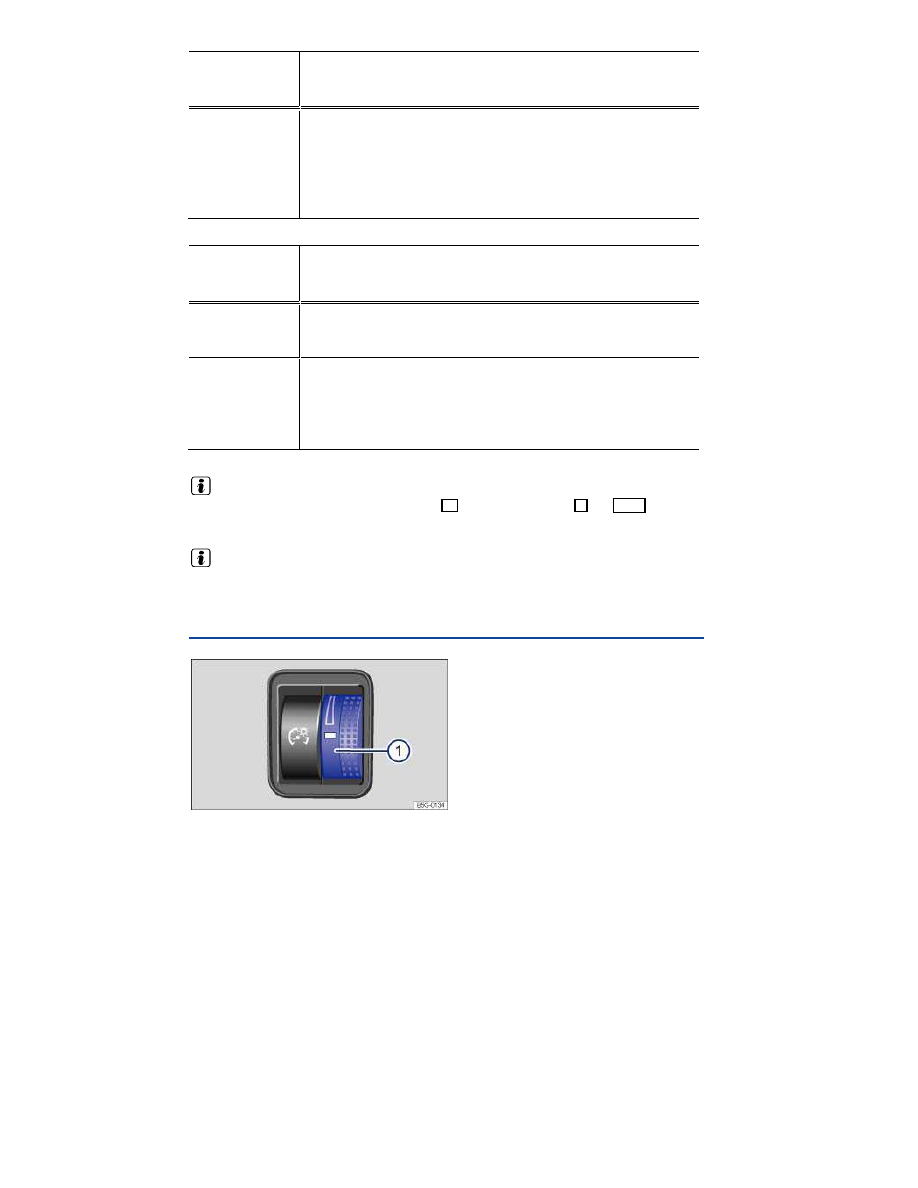Volkswagen e-Golf (2015 year). Manual - part 8

Coming
Home
Action
Switch off:
– Automatically after delay period is over.
– Automatically, if a vehicle door or the rear hatch is still
open about 30 seconds after activation.
– Turn light switch to the position.
– Switch the ignition on.
Leaving
Home
Action
Switch on:
– Unlock the vehicle if the light switch is in the
posi-
tion and the low-light sensor registers darkness.
Switch off:
– Automatically after preset delay period is over.
– Lock the vehicle.
– Turn the light switch to the position.
– Switch the ignition on.
The length of time the lights stay on can be adjusted or the feature can be activated and deac-
tivated in the Infotainment system by pressing the
button followed by the
and Lights function
keys
⇒ Menu and system settings (SETUP).
If the Coming Home feature is switched on and the driver door is opened, no warning chime will
sound to alert you that the lights are still on.
Instrument panel lighting and headlight range adjustment
Fig. 76 To the left of the steering wheel: Thumbwheel to adjust instrument panel lighting 1.